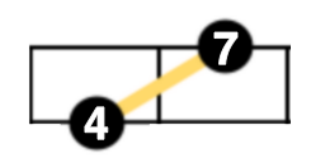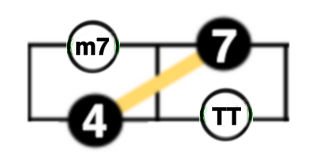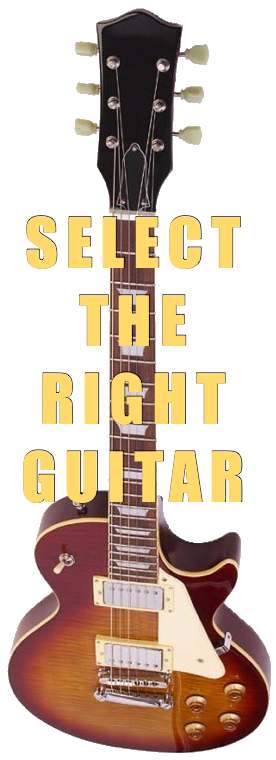In algebra, X is an unknown
A spurt is a drip under pressure
So an expert is an unknown drip under pressure
A joke told by an Engineer
Once a person is playing the MAJOR CHORD PROGRESSION and the BOX SLANT BOX without thinking about it, they will start thinking about the notes NOT in the MAJOR SCALE. Most styles of music don't bother moving past what you should already know.
If you are to the point that you are playing the MAJOR SCALE over the entire neck with ease, they you will start to recognize it and quickly tire of it.
Few reach this point.
If you are here, it is time to start filling in some of the blanks that we skipped. If you have the previous lessons under your belt, you already know WHERE the things are that we will be talking about and half the battle is won already.
Let us examine the six notes of BOX ONE

Let us fill in the empty area between these numbered notes

Let us examine the notes of SLANT

And again with the empty notes filled in

Let us examine the notes of BOX TWO


These are the rest of the notes in music. This is where many people give up, because it all seems so confusing. It is really quite simple, it just happens that a lot of people seem to feel better about themselves if you are confused.
If you look at the chart below, you will see the names of the notes you have been playing and the ones you have not. If you have been playing for a while, you may have heard of some of these for years and not known what they were. Strip all the names away, and it is just an interval from the ROOT or KEY.
|
FRETS FROM ROOT |
NAME | SHORT NAMES | OTHER NAMES |
| 0 | ROOT | P1 / d2 | Diminished Second / Perfect Unison / Tonic / Key |
| 1 | Minor Second | m2 / A1 | Augmented Unison / (9th an octave above) |
| 2 | Major Second | M2 / d3 | Diminished Third |
| 3 | Minor Third | m3 /A2 | Augmented Second / (11th an octave above) |
| 4 | Major Third | M3 / d4 | Diminished Fourth |
| 5 | Perfect Fourth | P4 / A3 | Augmented Fourth |
| 6 | Tri-Tone | TT / d5 / A4 |
Diminished Fifth / Augmented Fourth / (13th an octave above) |
| 7 | Perfect Fifth | P5 / d6 | Diminished Sixth |
| 8 | Minor Sixth | m6 / A5 | Augmented Fifth |
| 9 | Major Sixth | M6 / d7 | Diminished Seventh |
| 10 | Minor Seventh | m7 / A6 | Augmented Sixth |
| 11 | Major Seventh | M7 / d8 | Diminished Octave |
| 12 | Perfect Octave | P8 / A7 | Augmented Seventh |
Do not get confused when people start throwing around terms that you do not know. They are just using different language to describe something that you already know.
You will also want to learn your intervals.
Here is a great tool to start with
